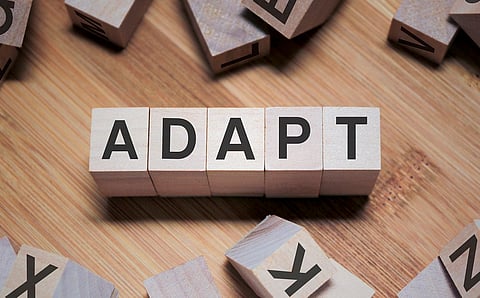

With less than a month to go before the 30th session of the Conference of Parties (COP30) to the United Nations Framework Convention on Climate Change (UNFCCC) in Belem, Brazil, policymakers, financiers, and climate experts gathered in New Delhi on October 8 to demand urgent reform in global climate finance systems to better serve developing nations’ adaptation needs.
The high-level roundtable on Adaptation Finance, convened by Climate Trends, focused on operationalising the Global Goal on Adaptation (GGA), assessing India’s adaptation finance gaps, and aligning international funding with the realities of vulnerable economies.
Senior representatives from the Union Ministry of Environment, Forest and Climate Change (MoEFCC) and Ministry of Finance (MoF), experts from global development financial institutions, think tanks, and academia warned that India, already battling record heat waves, erratic monsoons, and agricultural losses, remains severely underfunded for adaptation. While global adaptation finance rose to $28 billion in 2022, the actual requirement exceeds $350 billion annually, with over 60 per cent delivered as loans — a burden for climate-vulnerable economies.
“Adaptation needs to be built into a profitable market system which attracts private investment,” said Abhishek Acharya, director at MoEFCC. “We need strong policy frameworks that empower even local governments — states, municipalities, and panchayats — to access funding.”
The roundtable underlined that adaptation financing in India is not systematically integrated into national and state budgets. “Adaptation financing needs assessment of different stressors and how they impact GDP across sectors,” said Amrita Goldar, senior fellow at ICRIER. “For adaptation, technologies remain niche, so public finance must lead the way before private investment follows.”
Experts noted that India is preparing to submit its first National Adaptation Plan (NAP) to the UNFCCC at COP30. Linking this domestic plan to global negotiations will be critical to shaping outcomes on the GGA.
Several participants stressed the need for reform in multilateral development banks (MDBs) and the creation of innovative instruments such as blended finance, resilience bonds, and adaptation-focused funds.
“We are living in a brittle and anxious world,” said Ovais Sarmad, vice chair, Greenhouse Gas Protocol. “India must actively engage in MDB reform discussions. Climate justice rooted in common but differentiated responsibilities is more relevant than ever.”
Kathryn Miliken, senior climate change specialist at the Asian Development Bank, highlighted the gap: “Adaptation finance is only 10 per cent of total climate finance. At ADB, we are targeting 30 per cent for adaptation, but the challenge is mainstreaming adaptation into economic planning.”
Localised and people-centred approaches
Speakers agreed that adaptation is inherently local and requires decentralised access to finance. “Capabilities are not just to report but also to act. Local authorities need both resources and autonomy,” said Arjun Dutt, senior programme lead at CEEW.
Amir Bazaz of the Indian Institute for Human Settlements warned that investments are “not risk-informed or climate-informed” and remain driven by short-term returns. He stressed that adaptation must be embedded into urban governance, where capacity is still evolving.
Some participants urged India to elevate adaptation as a political issue, not just a technical one. Ambassador Manjeev S. Puri, distinguished fellow at TERI, said: “We understand the global game of power around energy, but it is time to speak much louder about adaptation. Resilience is a word that resonates politically in India — linking adaptation to resilience will create buy-in.”
Aarti Khosla, director of Climate Trends, closed the meeting with a reminder of the stakes: “Current estimates put India’s adaptation needs at $359 billion per year. More than 60 per cent of existing finance comes as loans. With COP30 weeks away, India’s leadership on adaptation finance will be crucial to bridge North-South divides and make the Global Goal on Adaptation practical.”
The New Delhi dialogue will feed directly into India’s stance at COP30, where negotiators face the task of finalising indicators for the GGA. Experts warned that measurement alone is not enough. “If GGA indicators are finalised, they must drive meaningful resources, not just reporting,” said Pushp Bajaj of CEEW.
As the countdown to COP30 begins, India’s push on adaptation finance is emerging as a litmus test for whether global climate negotiations can truly deliver for vulnerable nations.